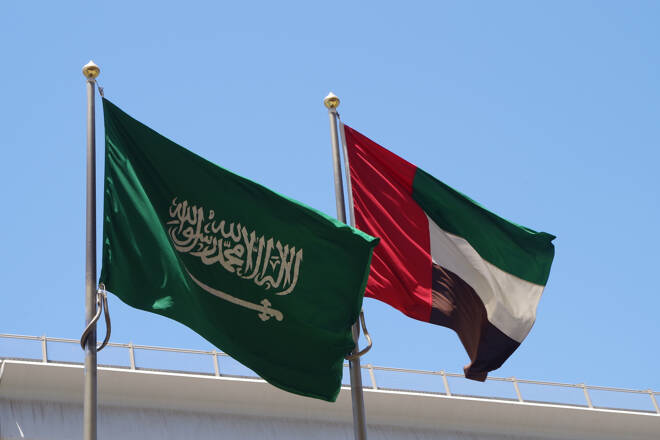Advertisement
Advertisement
Will Saudi Oil Save Consumers If Russian Exports Collapse In Winter?
By:
A Reuters report suggests that Saudi Arabia and UAE may be ready to pump more oil if necessary.
In this article:
Key Insights
- Reports suggest that OPEC members may raise production by as much as 2.0 – 2.7 million bpd in case of energy shortage in winter.
- Historic data suggests that major production increases from Saudi Arabia and UAE are possible.
- However, it remains to be seen whether record production levels are sustainable, and it’s too early to tell whether OPEC members are ready to commit to a significant production boost.
Saudi Arabia And UAE Are Reportedly Ready To Raise Production In Case Of Supply Problems In Winter
Yesterday, OPEC+ raised its production growth target by a mere 100,000 bpd, boosting fears that the group has no spare capacity to meet demand in case of additional supply disruptions.
However, a recent Reuters report suggests that Saudi Arabia and UAE are saving “oil firepower” to meet demand if the world faces a supply crisis this winter. According to the report, Saudi Arabia, UAE and some other OPEC members have 2.0 – 2.7 million bpd of spare capacity.
According to the most recent OPEC Monthly Oil Market report, Saudi Arabia produced 10.46 million bpd in Q2 2022, up from 10.16 million bpd in Q1 2022 (information based on secondary sources). UAE produced 3.05 million bpd, up from 2.95 million bpd in Q1 2022. Meanwhile, production declined in Gabon, Libya, and Nigeria as these countries faced various obstacles.
The Key Question Is Whether Record Production Levels Are Sustainable
Saudi Arabia reached record production in April 2020, when it pumped as much as 12 million bpd during a price war with Russia. It is not clear whether the country can maintain this level of production for more than a few months. UAE oil production topped near the 4 million bpd level during the same price war.
At first glance, the estimate of an additional capacity of 2.0 – 2.7 million bpd looks plausible. However, only practice can tell whether these levels are sustainable for Saudi Arabia and UAE. Traders should note that both countries have pumped oil at record levels for a very short period of time, so they may face significant challenges if they have to produce at such levels for 6 – 12 months.
It is not clear why Saudi Arabia should try to put pressure on oil prices at a time when the oil market is moving lower due to recession fears. WTI oil declined from June highs near the $125 level to the $90 level and continues to move lower.
At this point, it looks that it is premature to expect that Saudi Arabia or UAE will be ready to invest in raising oil production to record levels in winter at a time when the fate of Russian oil exports is not clear.
That said, the current trend in the oil market is bearish, and oil will certainly need additional positive catalysts to break the downside trend.
For a look at all of today’s economic events, check out our economic calendar.
About the Author
Vladimir Zernovauthor
Vladimir is an independent trader and analyst with over 10 years of experience in the financial markets. He is a specialist in stocks, futures, Forex, indices, and commodities areas using long-term positional trading and swing trading.
Latest news and analysis
Advertisement
